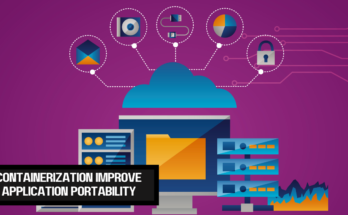How To Achieve Workloads Recovery Ready?
In today’s digital landscape, businesses are increasingly reliant on technology to drive their operations efficiently. Workloads, in the context of IT infrastructure, refer to the tasks and processes that run on a computing system, including applications, databases, and other software components. As organizations strive to ensure seamless operations, the concept of “Workloads Recovery” has emerged as a critical aspect of IT management.
What are Workloads?
Workloads encompass all the computing tasks and processes that are executed within an organization’s IT environment. These may include routine operations such as data processing, transaction handling, and application management, as well as more complex tasks like analytics and machine learning algorithms.
The Significance of Workloads Recovery
Workloads are the backbone of modern businesses, driving productivity, innovation, and customer satisfaction. However, disruptions such as system failures, cyber-attacks, or natural disasters can severely impact these workloads, leading to downtime, data loss, and financial losses. Therefore, ensuring the recovery readiness of workloads is paramount to maintaining business continuity and resilience.
Key Elements of Workloads Recovery
To achieve Workloads Recovery readiness, organizations need to focus on several key elements within their IT infrastructure.
1. Data Management
Efficient data management practices, including regular backups, data replication, and archival strategies, are essential for ensuring the resilience of workloads. By maintaining multiple copies of critical data and establishing robust retrieval mechanisms, organizations can minimize the impact of data loss incidents.
2. Resource Optimization
Optimizing resource utilization across servers, networks, and storage systems is crucial for maintaining workload performance during recovery scenarios. Implementing virtualization technologies, load balancing mechanisms, and dynamic resource allocation strategies can help organizations adapt to fluctuating demands and mitigate resource constraints.
3. Security Measures
Protecting workloads against cyber threats and unauthorized access is fundamental to their recovery readiness. Implementing robust security measures such as encryption, access controls, and intrusion detection systems can safeguard critical assets and prevent data breaches during recovery operations.
Implementing Workloads Recovery Ready Strategies
Achieving Workloads Recovery readiness requires a systematic approach to assessing, planning, and implementing recovery strategies.
Assessing Current Workloads
Organizations should conduct comprehensive assessments of their existing workloads to identify vulnerabilities, dependencies, and criticality levels. This involves analyzing application dependencies, data dependencies, and performance requirements to determine recovery priorities.
Identifying Vulnerabilities
Once potential vulnerabilities are identified, organizations must prioritize them based on their impact on business operations and the likelihood of occurrence. This involves conducting risk assessments, vulnerability scans, and penetration tests to identify weaknesses in the IT infrastructure.
Developing Recovery Plans
Based on the assessment findings, organizations should develop detailed recovery plans outlining procedures, responsibilities, and timelines for restoring workloads in the event of a disruption. These plans should address various scenarios, including hardware failures, software glitches, and cyber-attacks, and incorporate strategies for data recovery, system restoration, and continuity of operations.
Challenges in Workloads Recovery Ready
Despite the benefits of Workloads Recovery Ready, organizations face several challenges in implementing effective recovery strategies.
| Challenges | About |
|---|---|
| Complexity in Data Handling | The increasing volume, velocity, and variety of data present challenges in managing and protecting workloads effectively. Organizations must contend with data fragmentation, compatibility issues, and regulatory compliance requirements, complicating the recovery process. |
| Cost Management | Investing in Workloads Recovery solutions can be costly, particularly for small and medium-sized businesses with limited budgets. Organizations must balance the costs of implementing recovery measures with the potential losses incurred during downtime or data breaches. |
| Adapting to Dynamic Workloads | The dynamic nature of modern workloads, characterized by fluctuating demand patterns and evolving application architectures, poses challenges for recovery planning. Organizations must continuously monitor and adjust their recovery strategies to accommodate changes in workload dynamics and infrastructure configurations. |
Benefits of Being Workloads Recovery Ready
Despite the challenges, achieving Workloads Recovery Ready offers several benefits to organizations. By implementing robust recovery measures, organizations can enhance the security and integrity of their data, protecting it against unauthorized access, data corruption, and cyber threats. Explores more reasons to consider applying Workloads Recovery into your overall data protection strategy including:
- Greatly Reduced Time and Effort in DR
- Lower DR Budgets
- Frequent Testing and Validated Recovery
- Ultra-Low Recovery Point Objectives
- Ultra-Low Recovery Time Objectives
- Heightened Disaster Readiness
- Multi-Cloud Protection
Future Trends in Workloads Recovery
As technology continues to evolve, several trends are shaping the future of Workloads Recovery readiness.
Automation and AI Integration
Automation technologies and artificial intelligence are increasingly being utilized to streamline recovery processes, enabling organizations to automate tasks such as data backup, restoration, and failover management.
Edge Computing Solutions
The proliferation of edge computing technologies is driving the adoption of decentralized recovery architectures, allowing organizations to replicate and distribute workloads across geographically dispersed edge nodes for improved resilience and performance.
Conclusion
In conclusion, Workloads Recovery Ready is essential for ensuring the resilience, security, and continuity of business operations in today’s digital age. By focusing on key elements such as data management, resource optimization, and security measures, organizations can mitigate the impact of disruptions and maintain productivity levels even in the face of adversity.
FAQs
What are workloads in IT infrastructure?
Workloads refer to the tasks and processes that run on computing systems, including applications, databases, and software components.
Why is Workloads Recovery Ready important?
Workloads Recovery Ready is crucial for maintaining business continuity, resilience, and data security in the event of disruptions such as system failures, cyber-attacks, or natural disasters.
What are the key elements of Workloads Recovery Ready?
The key elements of Workloads Recovery include data management, resource optimization, and security measures to ensure the resilience and availability of critical workloads.

